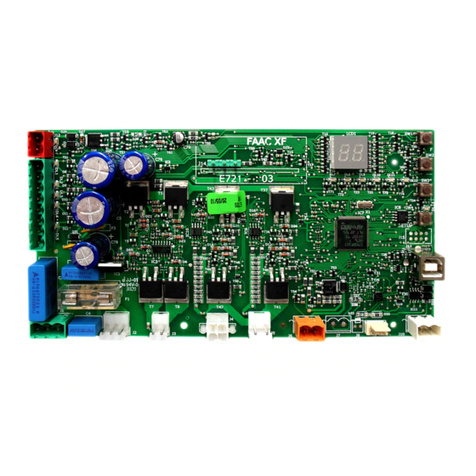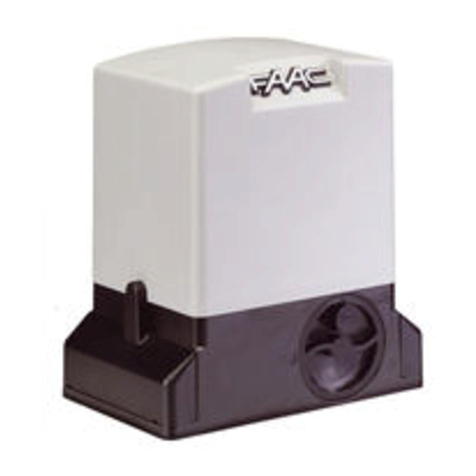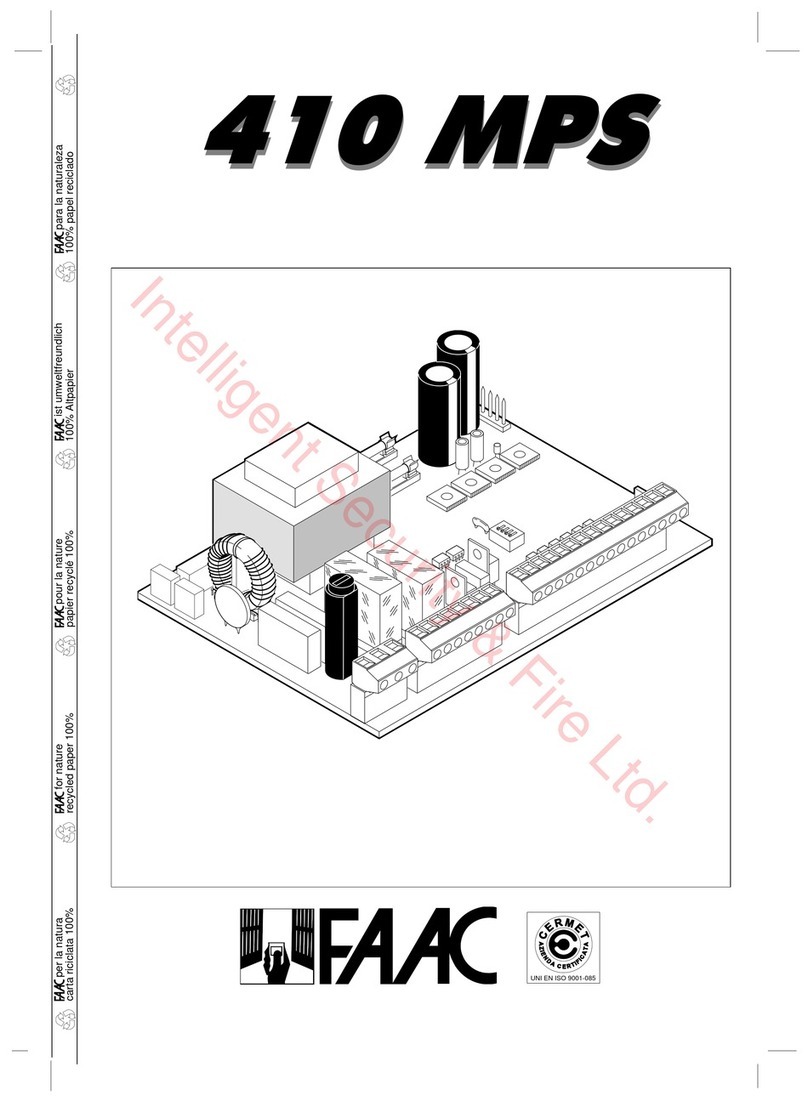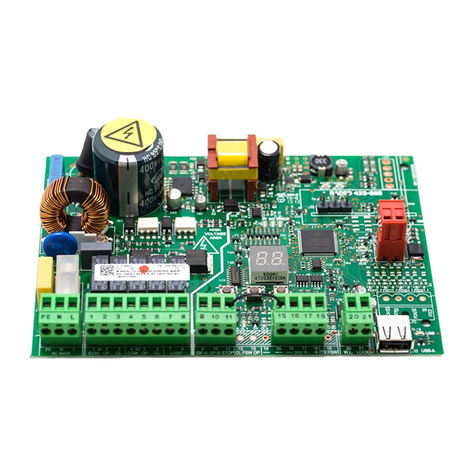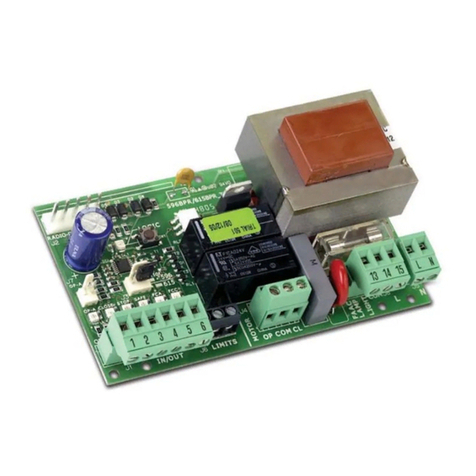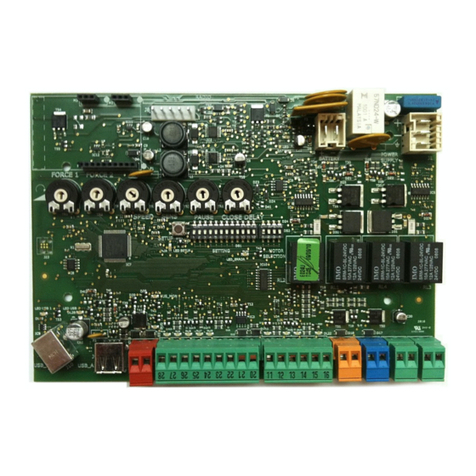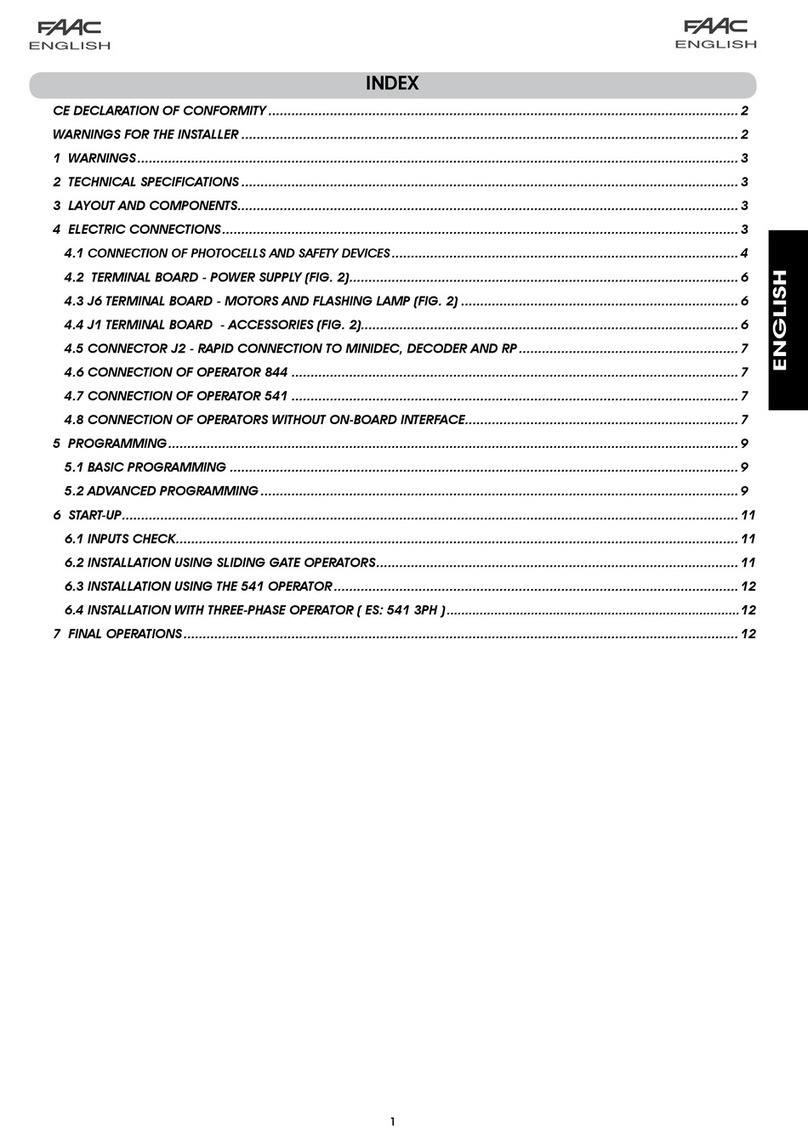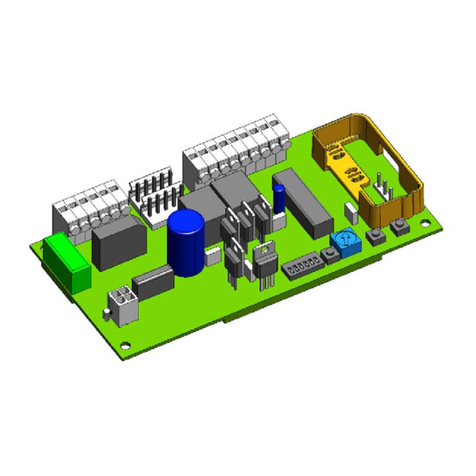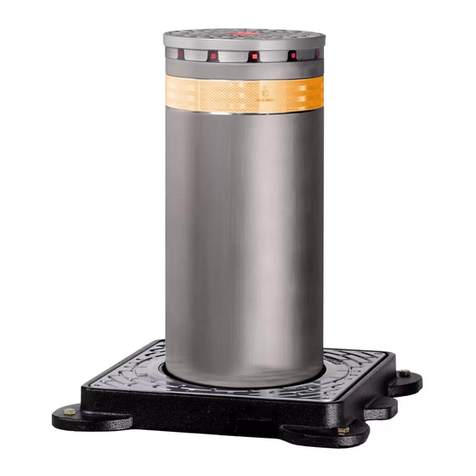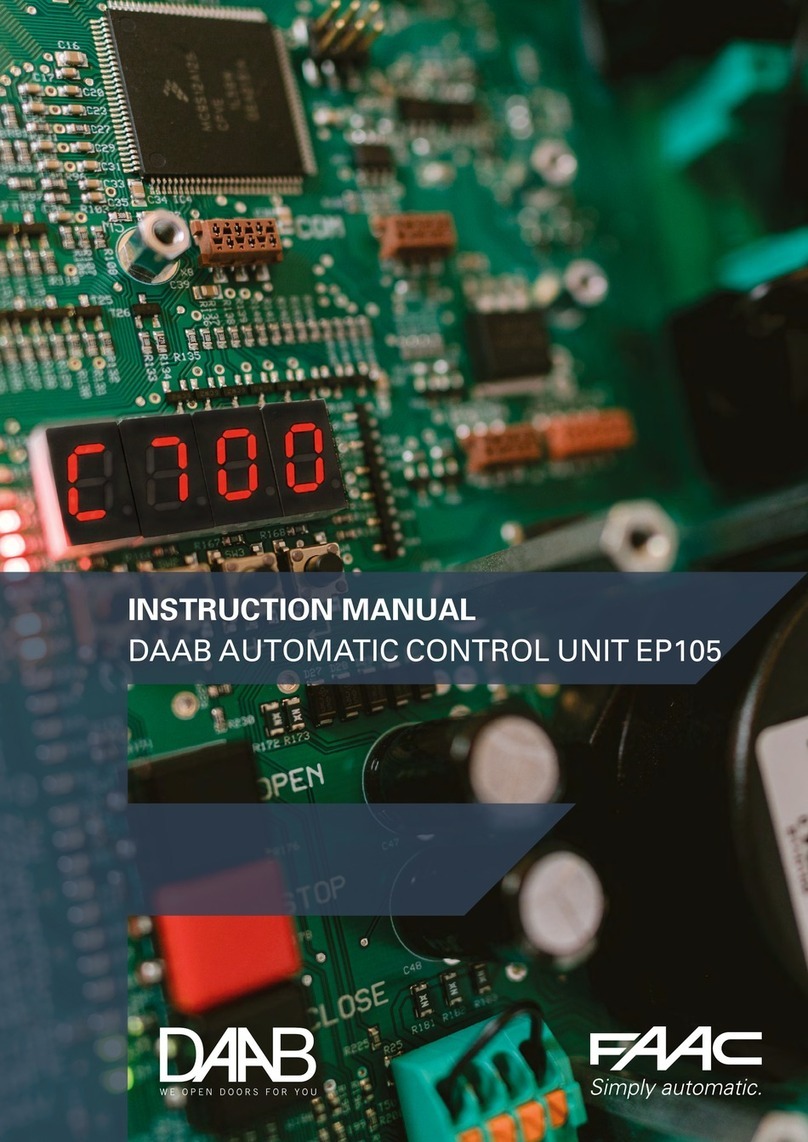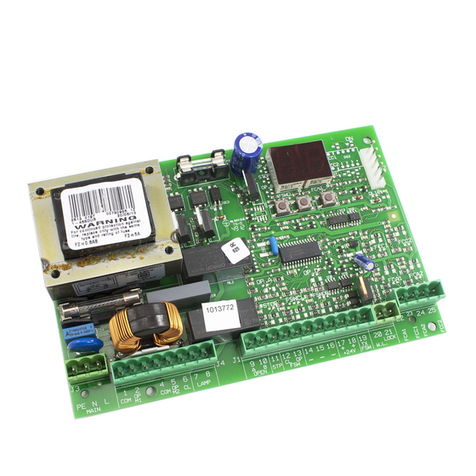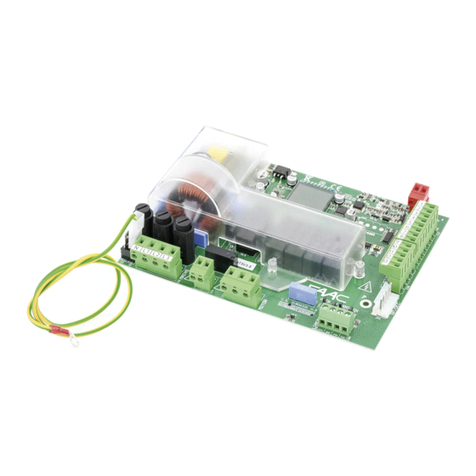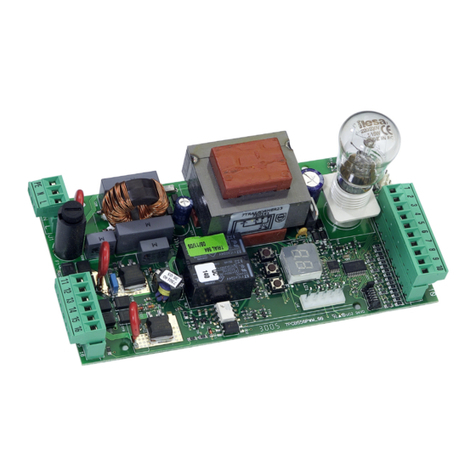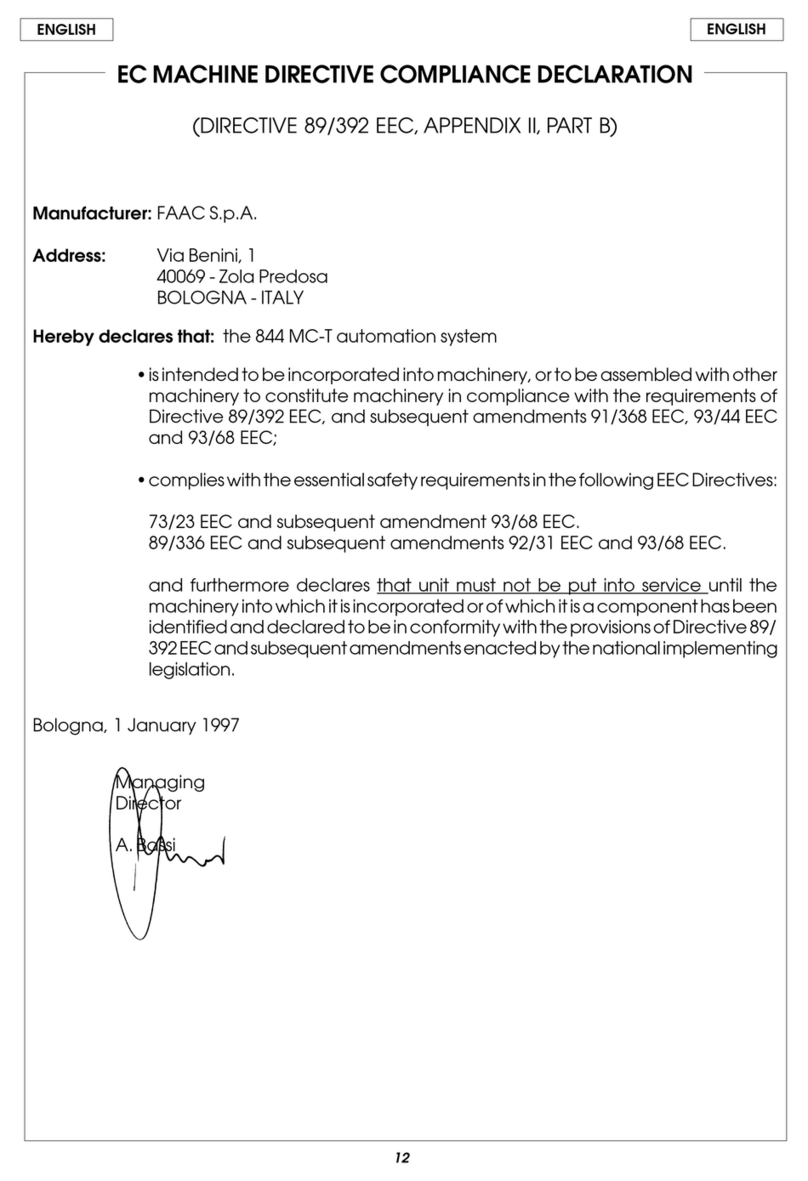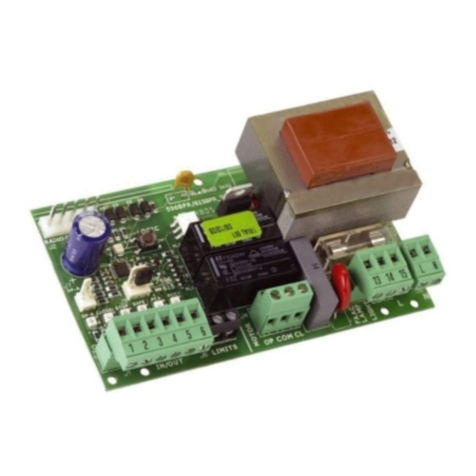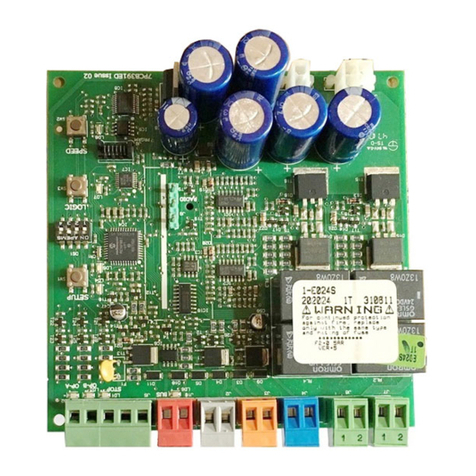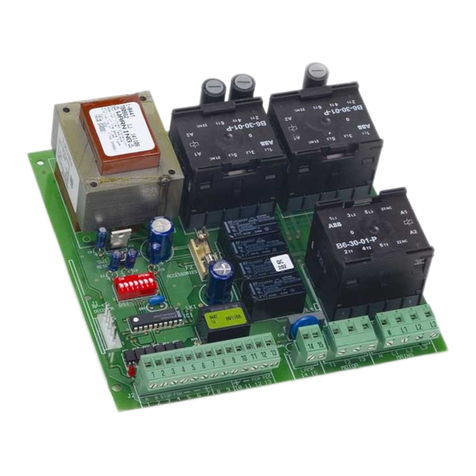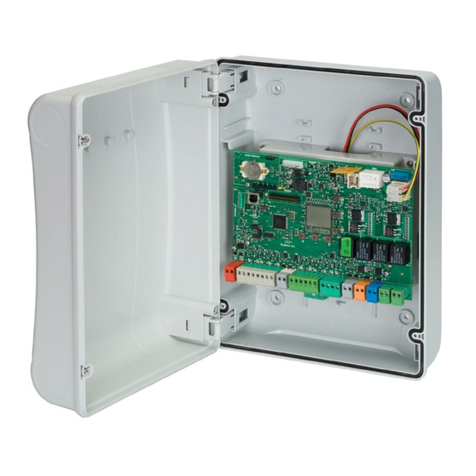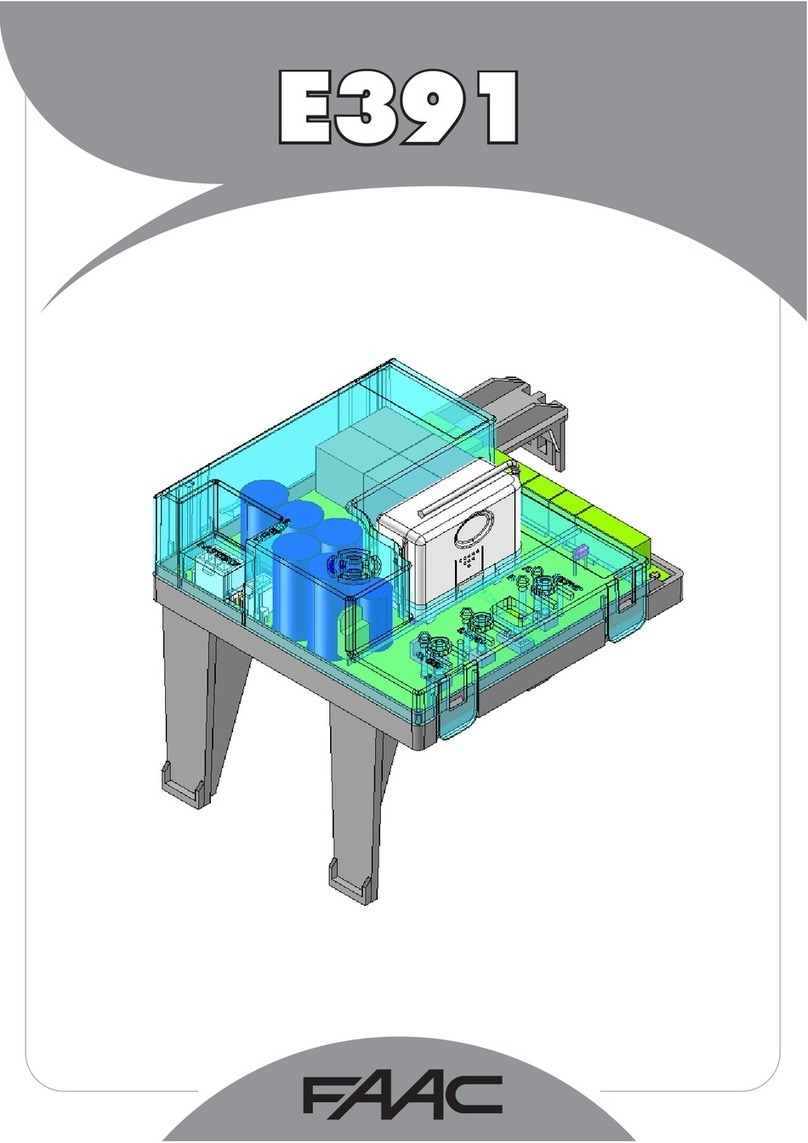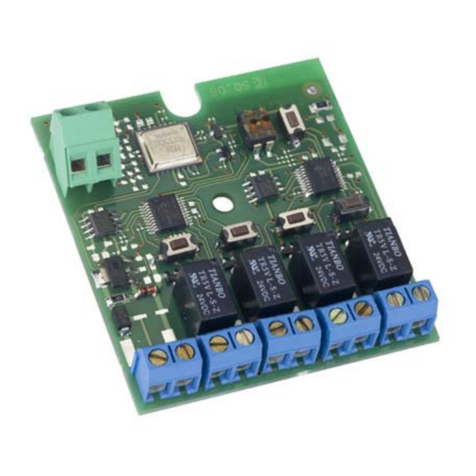
1 1
ENGLISH
CE CONFORMITY DECLARATION
Manufacturer: FAAC S.p.A.
Address: Via Calari, 10 - 40069 Zola Predosa BOLOGNA - ITALY
Declares that: The control unit
• ·conforms to the essential safety requirements of the following EEC directives
2006/95/EC Low Voltage Directive
99/5/EC R&TTE
CE 0470
Additional note:
This product underwent tests in a typical homogenous configuration
(all products manufactured by FAAC S.p.A.).
Bologna, 01 January 2010
The Managing Director
A.Marcellan
1) ATTENTION! To ensure the safety of people, it is important that
you read all the following instructions. Incorrect installation
or incorrect use of the product could cause serious harm
to people.
2) Read the instructions carefully before installing the product.
3) Do not leave packing materials (plastic, polystyrene, etc.) within
reach of children as such materials are potential sources of
danger.
4) Store these instructions for future reference.
5) This product was designed and built strictly for the use indicated
in this documentation. Any other use, not expressly indicated
here, could compromise the good condition/operation of
the product and/or be a source of danger.
6) FAAC declines all liability caused by improper use or use other
than that for which the automated system was intended.
7) Do not install the equipment in an explosive atmosphere: the
presence of inflammable gas or fumes is a serious danger
to safety.
8) FAAC is not responsible for failure to observe Good Technique
in the construction of the closing elements to be motorised,
or for any deformation that may occur during use.
9) Before attempting any job on the system, cut out electrical
power.
10) The mains power supply of the automated system must be
fitted with an all-pole switch with contact opening distance
of 3mm or greater. Use of a 6A thermal breaker with all-pole
circuit break is recommended.
11) Make sure that a differential switch with threshold of 0.03 A is
fitted upstream of the system.
12) Make sure that the earthing system is perfectly constructed,
and connect metal parts of the means of the closure to it.
13) The safety devices (EN 12978 standard) protect any danger
areas against mechanical movement Risks, such as
crushing, dragging, and shearing.
14) Use of at least one indicator-light (e. g.: FAACLIGHT) is
recommended for every system, as well as a warning sign
adequately secured to the frame structure, in addition to
the devices mentioned at point “15”. (if any)
15) FAAC declines all liability as concerns safety and efficient
operation of the automated system, if system components
not produced by FAAC are used.
16) For maintenance, strictly use original parts by FAAC.
17) Do not in any way modify the components of the automated
system.
18) Do not allow children or adults to stay near the product while
it is operating.
19) Keep radio controls or other pulse generators away from
children, to prevent the automated system from being
activated involuntarily.
20) Transit is only possible when the automated system is idle.
21) The End-user must avoid any attempt to repair or adjust the
automated system personally. These operations must be
carried out exclusively by qualified personnel.
22) Maintenance: perform at least every six months a functional
check of the system, paying special attention to the efficiency
ofthesafety devices(included,whereforeseen, theoperator’s
thrust force) and of the release devices.
23) What is not explicitly stated in these instructions is not
permitted.
IMPORTANT NOTICE FOR THE INSTALLER
GENERAL SAFETY REGULATIONS












